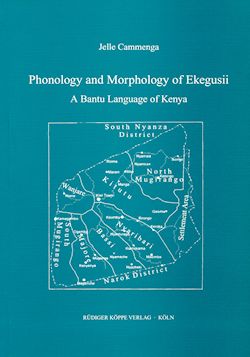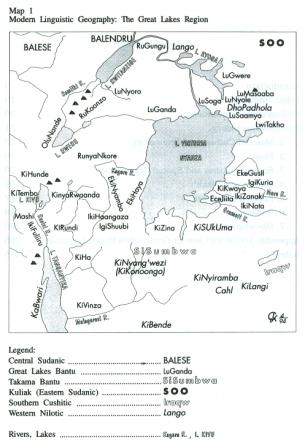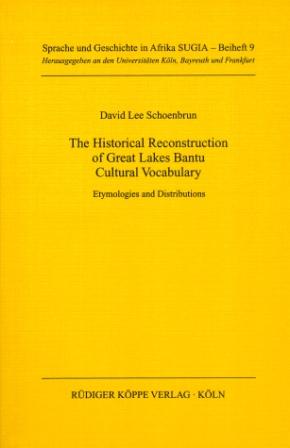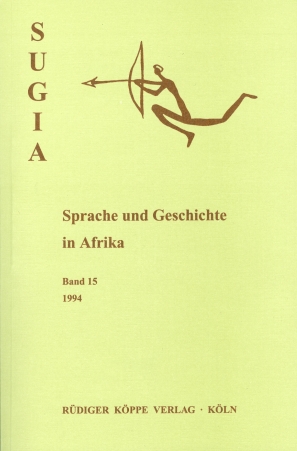



Phonology and Morphology of Ekegusii (E.42)
A Bantu Language of Kenya
Author: Jelle Cammenga. Series edited by: Bernd Heine, Wilhelm J.G. Möhlig †.
Series: EALD East African Languages and Dialects Volume 12
2002612 pp.
1 map, numerous tables and charts, appendix: Test Words, Informant Files
Text language(s): English
Format: 160 x 240 mm
910 g
Paperback
€ 98.00
Buy 'Phonology and Morphology of Ekegusii (E.42)' as a downloadable PDF document directly from our online shop »
Order 'Phonology and Morphology of Ekegusii (E.42)' as print edition »
Gusii is an East Nyanza Bantu language (Guthrie’s classification E.42) spoken by at least one million people (www.ethnologue.org: 2.12 millions, 2006). Beyond the level of dialectal variations, it is closely related to other Bantu languages of the region, namely to Kuria, Mfangano and Suba. Although, with respect to the number of speakers, the Gusii language still has a regional importance in Kenya, it is little known.
The author did his field research on the grammar of Gusii in the years 1996 and 1997. He has widened our knowledge on the linguistic inventory and structure of the Gusii language considerably, understanding his grammatical description of Gusii as a direct continuation of Wilfred Whiteley’s pioneer work from 1956 and 1960 that, for a long time, had remained the only printed source of the language. He frequently formulates his own findings with reference to Whiteley’s statements confirming, correcting or complementing them. In this way, Gusii next to Kuria (E.43) has become one of the best-documented Bantu languages of South West Kenya.
From the Africanist’s point of view, there are still three major gaps in the research record of Gusii to be filled: a thorough analysis of the prosodological (tonal) system, a comprehensive dictionary and a scholarly edition of local verbal art. These studies are somehow urgent, because the language is under heavy pressure of Lwoo, a Nilotic language and Swahili.
The new socio-linguistic development is to the detriment of Gusii in so far as it is more and more ousted from the public domain and subject to massive linguistic influence from Lwoo and Swahili. In this perspective, the appearance of the author’s comprehensive and meticulous description of Gusii is highly welcomed.
By the same author, another grammar Igikuria Phonology and Morphology. A Bantu Language of South-West Kenya and North-West Tanzania was published in the same series, featuring the Kuria language (E.40) which is most closely related to Gusii. Furthermore, an analysis of the cultural vocabulary of the Great Lankes Bantu languages and a couple of descriptions of Kenyan Bantu languages have appeared:
Accompanying material:
- Igikuria Phonology and Morphology (E.40)
(ISBN 978-3-89645-029-6 ) - The Historical Reconstruction of Great Lakes Bantu Cultural Vocabulary
(ISBN 978-3-89645-095-1 )
Cross-reference:
- A Modern Runyoro-Rutooro Grammar (J.10)
(ISBN 978-3-89645-023-4 ) - Atlas of Kamba Dialects (Kenya Bantu E.55)
(ISBN 978-3-89645-708-0 ) - Bantu Languages
(ISBN 978-3-89645-705-9 ) - Proceedings of the 6th WOCAL World Congress of African Linguistics, Cologne, 17-21 August 2009
(ISBN 978-3-89645-199-6 ) - The Bantu Languages of the Kenya Coast
(ISBN 978-3-89645-716-5 ) - Wörterbuch Kinyarwanda–Deutsch
(ISBN 978-3-89645-588-8 )
| « back | Print version | [top] |
 Books
Books Audio
Audio Biographies
Biographies Series
Series Festschrifts
Festschrifts Journals
Journals